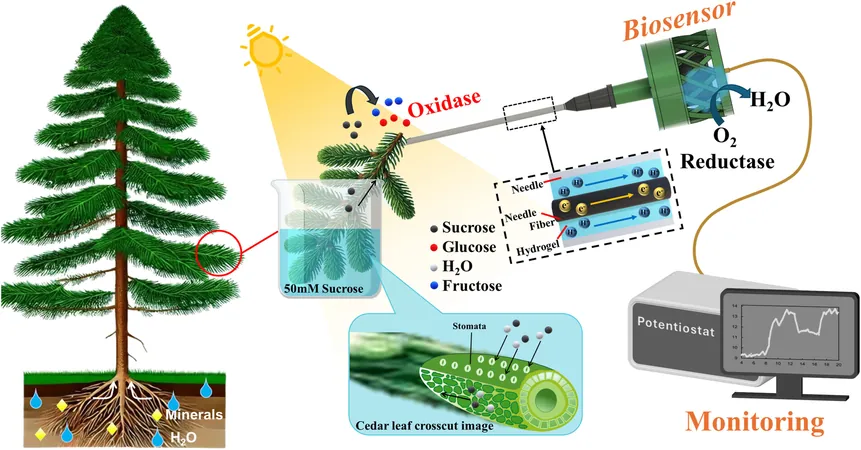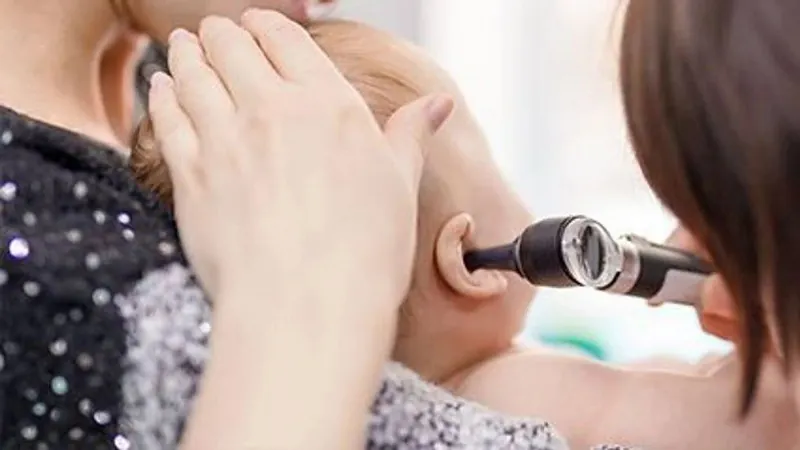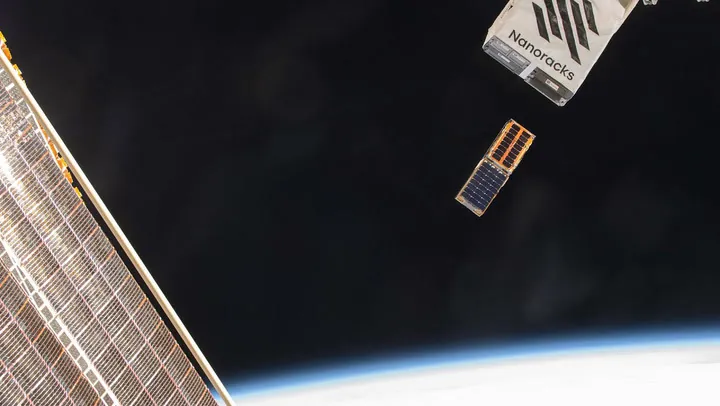
Revolutionary Biosensor Unlocks Secrets of Plant Sugar Uptake in Real-Time
2025-07-15
Author: Wei Ling
The Power of Sucrose in Plant Life
Sucrose isn't just a sweetener; it's the lifeblood of plants! A crucial energy source, sucrose fuels growth and acts as a key signaling molecule during moments of stress and development. As a product of photosynthesis, it is the primary sugar that travels long distances through plant tissues. Understanding how sucrose moves can reveal important insights into a plant's internal functioning.
The Challenge of Tracking Sucrose
Despite its significance, monitoring sucrose inside living plants in real-time has been a formidable challenge due to the scarcity of in vivo sensors. Most existing methods involve damaging plant tissues or provide only fleeting measurements.
A Game-Changing Solution from Waseda University
Researchers at Waseda University, led by Professor Takeo Miyake, have developed an innovative needle-type enzymatic biosensor. This cutting-edge device can be inserted into plant tissues to track sucrose concentrations in real-time. Published in the journal *Biosensors and Bioelectronics*, their groundbreaking work promises to transform our understanding of plant biology.
How Does the Sensor Work?
The biosensor employs a sophisticated multi-enzyme system, including glucose oxidase, invertase, and mutarotase, which break down sucrose to glucose, allowing for electrochemical detection. It boasts extraordinary sensitivity with a detection limit of 100 µM, a response time of just 90 seconds, and can function stably for over 72 hours with minimal harm to the plant.
Unlocking Plant Secrets
Equipped with this biosensor, Miyake and his team discovered a fascinating daily rhythm in sucrose transport within the stems of strawberry guava. Interestingly, sucrose levels peaked at night, aligning with known growth patterns. In another experiment involving Japanese cedar, the sensor revealed elevated sucrose concentrations only during light conditions, suggesting that these plants could absorb sucrose through their stomata—challenging previous scientific assumptions.
Revolutionizing Crop Management
This research isn't just academic; it's a catalyst for advancing agricultural strategies. The current version of the sensor is designed for laboratory use, but future designs aim at wireless functionality and less invasiveness for long-term field monitoring. Already, Miyake envisions a future where these sensors can track sugar dynamics in roots and reproductive organs, potentially optimizing crop yields and enhancing stress detection.
A New Era of Intelligent Agriculture
As Miyake aptly puts it, "If we can measure what the plant is doing in real-time, we can start to think about growing crops more intelligently." This biosensor's capabilities could be the key to unlocking not only improved agricultural practices but also a deeper understanding of plant biology.



 Brasil (PT)
Brasil (PT)
 Canada (EN)
Canada (EN)
 Chile (ES)
Chile (ES)
 Česko (CS)
Česko (CS)
 대한민국 (KO)
대한민국 (KO)
 España (ES)
España (ES)
 France (FR)
France (FR)
 Hong Kong (EN)
Hong Kong (EN)
 Italia (IT)
Italia (IT)
 日本 (JA)
日本 (JA)
 Magyarország (HU)
Magyarország (HU)
 Norge (NO)
Norge (NO)
 Polska (PL)
Polska (PL)
 Schweiz (DE)
Schweiz (DE)
 Singapore (EN)
Singapore (EN)
 Sverige (SV)
Sverige (SV)
 Suomi (FI)
Suomi (FI)
 Türkiye (TR)
Türkiye (TR)
 الإمارات العربية المتحدة (AR)
الإمارات العربية المتحدة (AR)